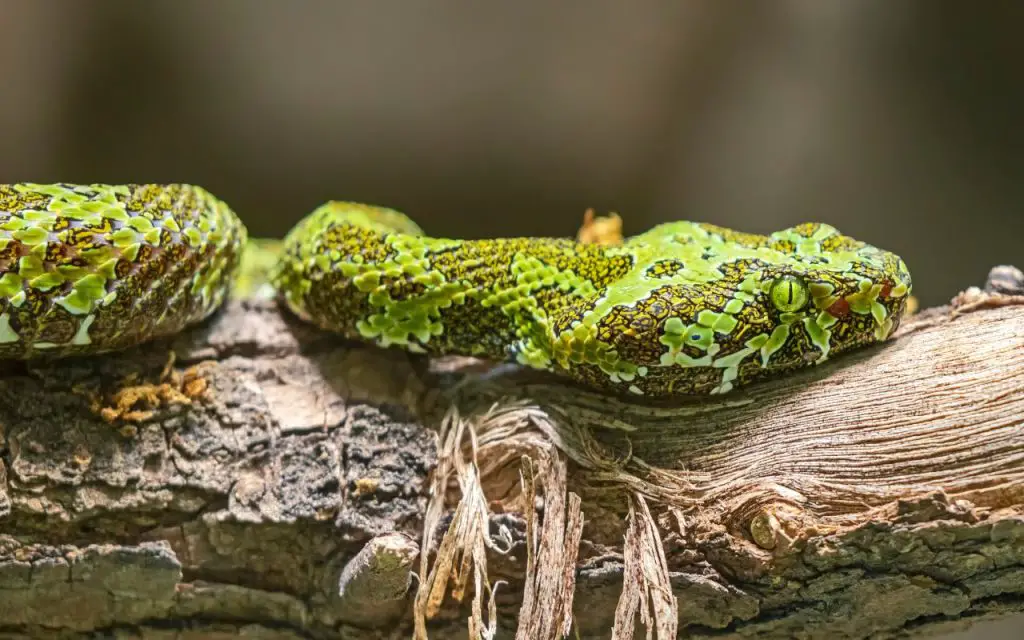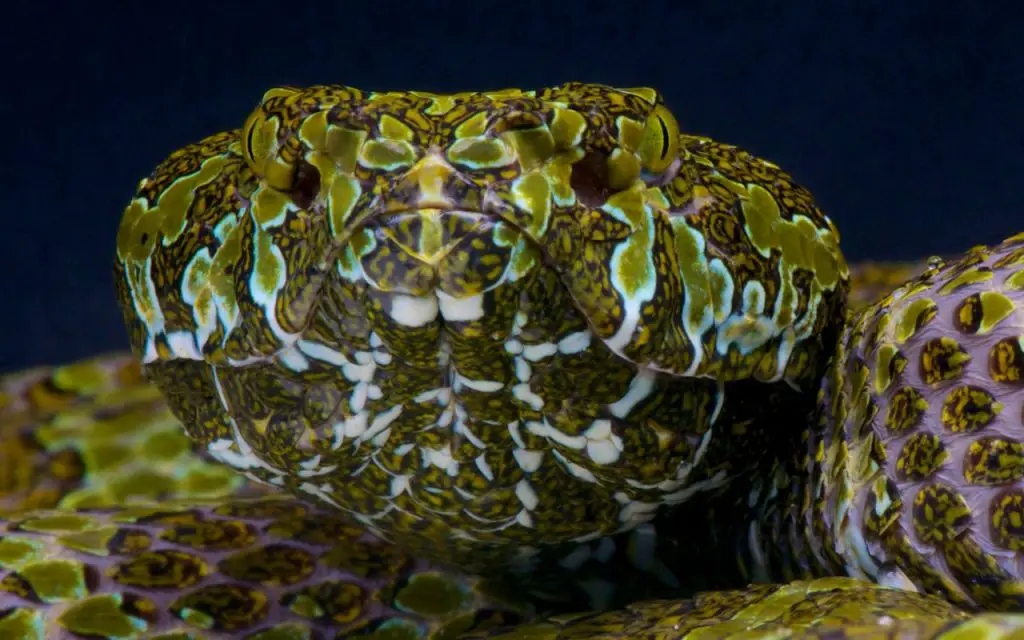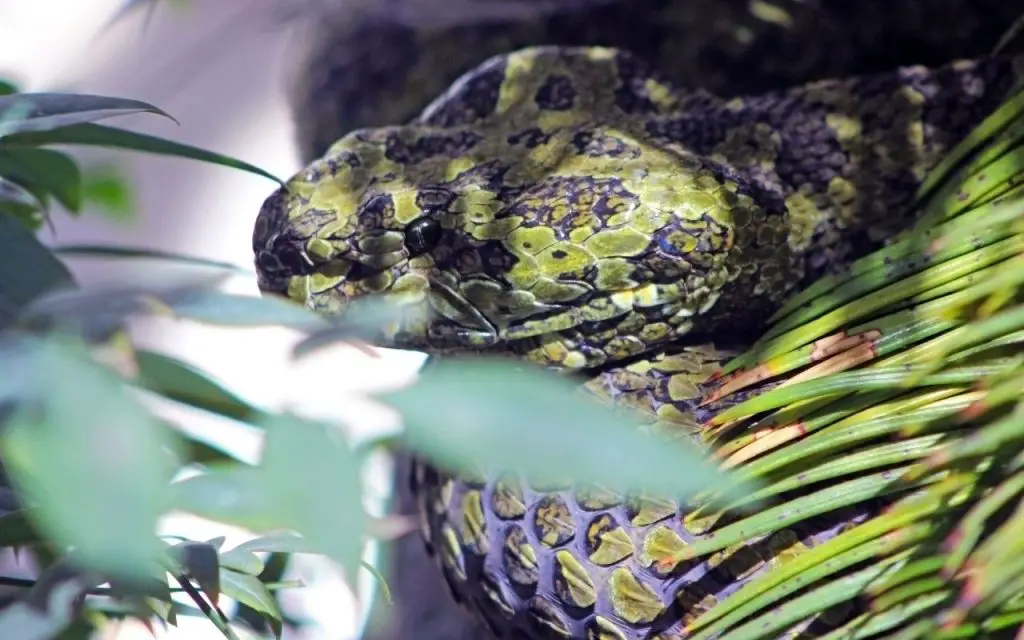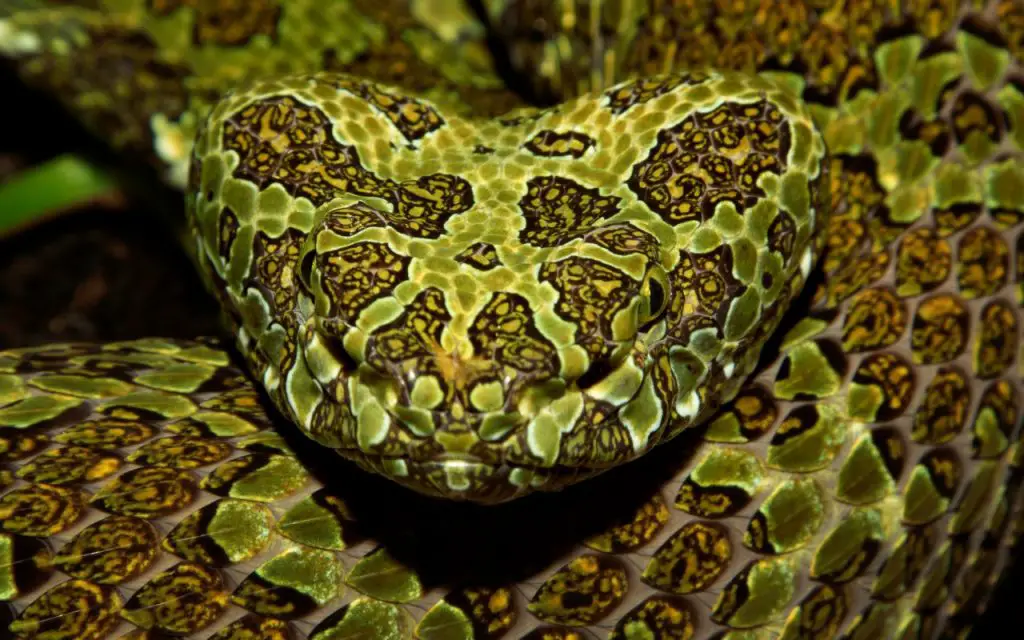The Mangshan Pit Viper is a big, beautiful viper that hails from the tropical mountains of southern China. It is now as threatened as it is unique…
Last updated on February 1st, 2023 at 09:30 am
The Mangshan pitviper (Protobothrops mangshanensis) is an endemic species of snake found in the mountainous regions of the southern and central Chinese provinces of Hunan and Guangdong. It is gentle in nature, and sadly subject to overexploitation by humans.
There are no recognized subspecies within this genus, but it is often mistaken for a chinese pit viper. It is also called the Mt. Mang pitviper or Mang Mountain pitviper. It is not an aggressive snake, but it can be a real danger if you don’t know how to properly handle one.
Habitat
The Mangshan pit viper is an endangered species found only in the mountain ranges of China. Due to intensive exploitation and habitat destruction, the species’ wild population has declined drastically.
As of 2000, the most optimistic estimate for its population size was 300-500 individuals. Since then, there has been no update to the population status of this species, but captive breeding of this snake has begun in several countries.
Approximately 100 specimens have been produced, and research is ongoing to learn how these animals are impacted by human activities.
The Mangshan pit viper lives in subtropical forests near Mt. Mang in southern China, and it is estimated that there are between three and five snakes per square kilometer of the mountain.
The first specimen of this species was captured in 1988 and sent to the Chengdu Institute of Biology, a division of the Chinese Academy of Science. Professor Zhao Ermi described the type specimen as Trimeresurus mangshanensis.

Venom
The venom of the endangered Mangshan pit viper has the potential to kill – if it can bothered to bite you. The species is native to the Nanling Mountain Range of China, where it has been a popular source for venom used in traditional medicine.
Its endemicity has made it the target of widespread exploitation. In China, the viper is widely harvested for its venom and skin, and its habitat has been destroyed. Due to this intense exploitation, this species is now at risk of extinction.
A typical Mangshan pit viper consists of a large, robust snake with an elongated triangular head. The body is covered in bright green color with brown blotches.
It has noticeable pits between its eyes and mouth. The pits aid in the snake’s vision and aid in digestion. The venom from the Mangshan pit viper kills by corroding the muscle tissue of its prey.
The Mangshan pit viper is a large and vivacious snake that is estimated to be seven feet long. Notwithstanding, it is less corpulent than the Gaboon pit viper, which grows up to six feet (182 cm).
It is due to this snake’s large size that it can produce substantial amounts of venom, and this is why it is potentially lethal to humans.

Poaching
The main threats to the Mangshan pit viper are illegal hunting and trade (nothing new here!). While the species is classified as a terrestrial wild animal with ecological, economic, and scientific values, it is not protected against illegal harvesting and trade.
The endangered Mangshan pit viper is a native of the tropical mountains of southern and central China. Since its discovery, it has been targeted for exploitation and destruction of its habitat.
In 2000, its population was estimated at around 300-500 individuals, but recent data on its population has not been updated.
This species spends the night hunting for dinner. Although generally shy, they can become aggressive when startled. Despite their size and appearance, the Mangshan Pit Viper does prefer to retreat if at all possible.
The range of the Mangshan pit viper is unknown, but it is likely that it is widespread in the area. The species is classified as an ambush feeder and may employ caudal luring.
Its body color resembles lichen on fallen logs, making it difficult for predators to detect it. Its body color also blends in well with the habitats traversed by its prey, increasing the likelihood of encounter.
Nonetheless, poachers apparently get very skilled at finding them, meaning that conservationists are left playing catch up.

Distribution
The distribution of the Mangshan pit viper is based on presence records for this species for the period 1990-2010. This snake lives in the forests of southern Hunan and the northern part of Guangdong.
It is often found on logs and structures along animal trails. It also inhabits limestone caves.
The distribution of the Mangshan pit viper is restricted to the Nanling Mountain Range in China. Habitat destruction and long-term intensive hunting have reduced the number of wild snakes in the region.
As of 2000, the population was estimated to have about 300-500 individuals. However, the current population status is still unclear as snakes are so hard to locate and track compared to other animals. This may hamper effective conservation efforts.
The species is found in undisturbed, mature mountain forests with oak and bamboo. Despite its small range, it has become a valuable resource for researchers. Its range and habitat are key to its conservation.

Threats
The exact range of the Mangshan pit viper is unknown. However, Chen (2003) calculated its distribution from a printed map and 50 historical records. Future surveys and geographical information system mapping are needed to refine the range.
The species prefers primary forest near streams at an altitude of 700-1100 m. However, the range of the Mangshan pit viper may be larger than the calculated range.
This lack of precise information is in of itself a threat. After all, conservation relies on research, and the be-all and end-all is knowing exactly which areas of habitat to protect.
As with all other species of snakes, habitat loss and poaching are the biggest physical threats to its population.
Despite its amazing adaptations for survival, the Mangshan pit viper is mainly endangered due to logging and the illegal pet trade. As such, proper conservation methods require continuous monitoring.
Fortunately, several facilities in the USA, Germany, and China have started breeding programs to restore this species’ population.
In fact, over 100 captive-bred babies have hatched in various breeding programs. However, there are other threats, and the species needs to be protected as much as possible.
Habitat destruction and illegal bamboo harvesting are two major threats to the Mangshan pit viper. These threats are caused by the growing number of tourists visiting the Mangshan National Nature Reserve.
These threats are also affecting the survival of the other rare species in the region. There are also reports of poaching in the Mangshan National Nature Reserve. As with most snake species, protection of its habitat is essential to ensure their survival.

Mangshan Pit Viper FAQ
Do Mangshan vipers lay eggs?
Unlike most viperids, these snakes are oviparous, meaning they lay eggs – sometimes as many as twenty.
The young are called neonates, hatchlings, or snakelets. After hatching, these neonates are fully equiped with venom and are independ immediately. No parental care is given – or needed.
Whilst it is true that most viperids give liver birth, the Mangshan isn’t the only snake in the family to do so. The Fea’s Viper (Azemiops feae) also lays eggs, as does the Bushmaster (Lachesis muta).
Whilst it is unclear why this may be, it has been theorised that egg-laying may a feature of older, more primitive viperid species and that the ability to give live birth came later on in the evolution of this group.
What does the mangshan pit viper eat?
The Mangshan pit viper is a terrestrial ambush predator that hides near the ground to wait for its prey. They have a white-tipped tail and are best known for feeding on birds, mammals and insects. They also eat frogs. Despite their imposing size, they are extremely shy and avoid humans.
Are Mangshan vipers rare?
Mangshan Pit Vipers are very rare. They are listed as endangered by the IUCN , and probably don’t have a wild distribution of more than 300 km2.
Animals with such limited range are particularly prone to overharvesting or habitat destruction, and quickly become functionally extinct in the wild.
